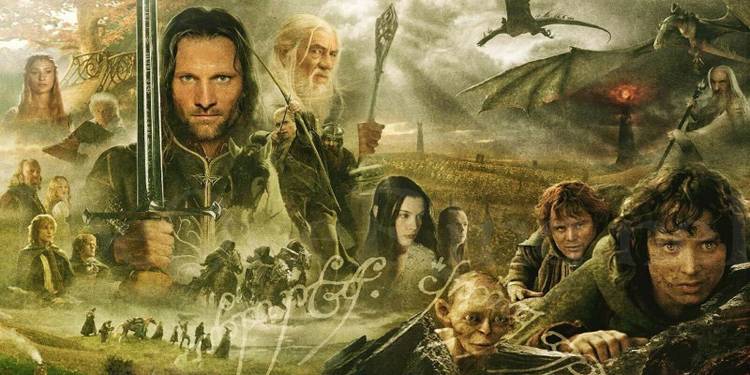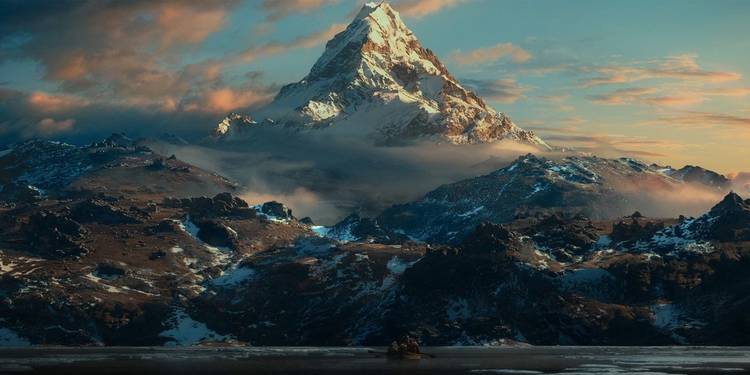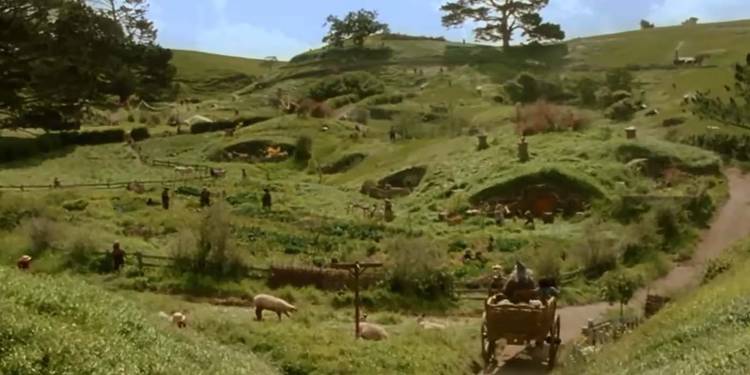The Lord of the Rings Trilogy Is Actually Tolkien's Most Epic Prequel
After writing The Hobbit and The Lord of the Rings, author J.R.R. Tolkien created an astonishing amount of lore surrounding Middle-earth. It remains one of, if not the most, iconic fantasy worlds of all time, which is so incredibly rich with characters and history that it can often feel real. And that's exactly what Tolkien wanted, as he wrote Middle-earth as if it was the prequel to Earth's real-life history.
Tolkien had a strong fascination with Earthen mythology, and it's seen scattered throughout his works. It influenced almost every piece of lore, from the Celtic inspiration for Rohan to the Nordic portrayal of Dwarves, all the way down to the Finnish-style languages for the many races. But reaching beyond that, the overall feel of Middle-earth was meant to reflect real life and become a whole new mythology for our planet. And this is shown from the very opening of The Hobbit, as it reads, "Long ago in the quiet of the world, when there was less noise and more green."
With many fantasy tales, some theories try to tie the magical world to Earth. Quite often, they search for evidence to suggest that Earth exists in the same universe or that the fantastical tale takes place in Earth's past or future. But with The Lord of the Rings, Tolkien was very open with this idea, often writing about it in his numerous letters talking about the world.
Letter 165 of The Letters of J. R. R. Tolkien reads, "Middle-earth, by the way, is not the name of a never-never land without relation to the world we live in... imaginatively this 'history' is supposed to take place in a period of the actual Old World in this planet." This confirms that, in Tolkien's mind, Middle-earth would one day become our modern age. Although, he also acknowledged the inconsistencies, saying, "I have not attempted to relate the shape of the mountains and land-masses to what geologists may say or summarize about the nearer past."
Because of this, it's assumed that some event after The Lord of the Rings completely reshapes Middle-earth, turning into the modern planet. In fact, Tolkien believed the gap to only be "about 6000 years" in Letter 211 and that "We are now at the end of the Fifth Age, if the ages were about the same length as the Second Age and Third Age. But they have, I think, quickened; and I imagine we are at the end of the Sixth Age, or the Seventh."
And the ending of the Lord of the Rings novels supports this, as the death of Sauron marks the coming of the Fourth Age, also known as the Age of Men. With Elves gone from the world and magic slowly fading away, there's a clear connection leading to the modern day. But of course, Tolkien saw it as pure myth and didn't try to explain away the details, such as why there's no evidence of Middle-earth remaining today.
While some may find this link to be something that takes away from the magic of Middle-earth, it's part of what makes the world feel so alive. It's all the real-life influences that make Middle-earth into an authentic world and turn Tolkien's creation into one of the mythologies he always looked up to.




0 Response to "The Lord of the Rings Trilogy Is Actually Tolkien's Most Epic Prequel"
Post a Comment